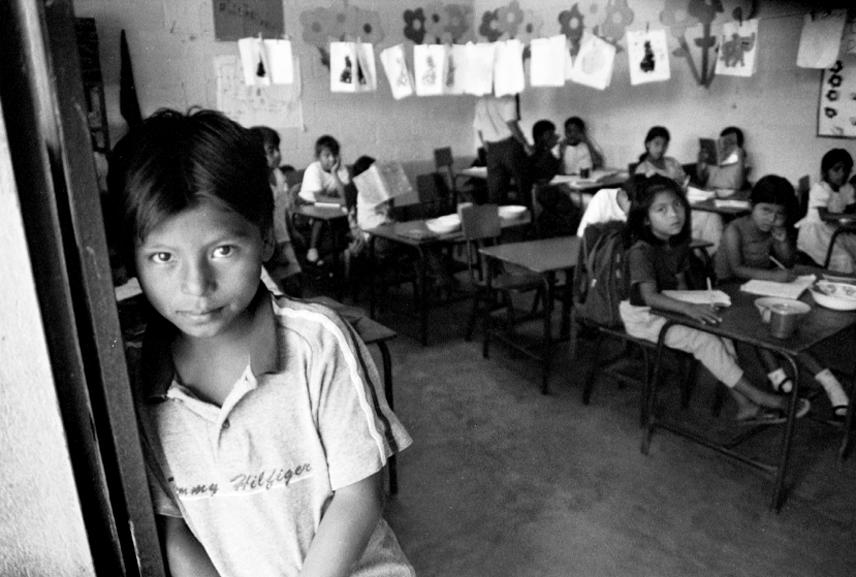This article is part two of a two-part feature on US immigration policy.
Guest Contributor: Anna-Catherine Brigida

In 1951, an estimated one million people who were uprooted from their homes in the aftermath of World War II were still waiting to return home. World diplomats recognized the need to address this crisis and met in Geneva to discuss the concept of refugees. They considered who qualified and the guidelines that should be implemented to protect these people. The states present mainly thought of displaced populations related to the aftermath of World War II. In this context, the convention determined a definition that set the foundation for how the international community handles refugee cases decades later.
According to the convention, a refugee is someone who (1) lives outside of his or her own country; (2) fled because of a well-founded sense of fear based on persecution on the basis of race, religion, nationality, social group or political opinion; (3) cannot return to their country based on this fear; and (4) is in this situation as a result of events that occurred before January 1, 1951.
New patterns of migration and causes of displacement have since emerged. Transnational criminal organizations now play an important role in both domestic and international politics. In the 1970s, the Medellin Cartel, an organized network of drug suppliers and smugglers led by the notorious Pablo Escobar in Colombia, made drug trafficking an international business. In the 1980s, Central American states experienced civil wars and South American countries experienced repressive military dictatorships where thousands of people ‘disappeared’. The Medellin Cartel was dismantled in 1993, but transnational drug trafficking organizations have continued to be a problem. The 1990s also saw the mass deportation of US-based gang members, particularly from Los Angeles-born gangs MS-13 and 18th Street, back to Central America, creating transnational gang organizations.
Times have certainly changed since 1951, but the international definition of “refugee” has more or less stayed the same. Gang and drug related violence is a major factor in Central American migrants’ decision to make the journey north (see part one). When these migrants reach the US they will face a deportation hearing and must make a case for asylum. But, do these Central American immigrants fleeing violence in their home countries fit the description? The answer isn’t black and white. Fear for their lives is undoubtedly present; yet, violence is not explicitly listed as a basis for fear of persecution.
These migrants’ legal proceedings are based on a previously determined set of rules about who qualifies as a refugee. The 1951 convention determined that a refugee was someone not just living outside his or her country of origin, but fleeing for fear of his or her life. Those who fled on the basis of racial, religious, national, social or political persecution were assured asylum. 148 countries have accepted this definition, but many world leaders and human rights advocates believe that it should be even clearer.
In 1984, Latin American leaders decided that the current refugee definition was outdated, so they crafted the Cartagena Declaration on Refugees. Central America, Mexico and Panama agreed that fear of persecution from violence, human rights violations, foreign aggression or internal conflicts should all be added as valid reasons for one to request refugee status. But, the US has not ratified the Cartagena Convention. Therefore, lawyers for Central American migrants arrested in the US still have to use to the 1951 definition “of refugee” to argue a case for asylum.
This is problematic for Northern Triangle asylum seekers. However, in recent years, lawyers have become more resourceful in the way that they present cases for those fleeing gang related violence, while still staying within the legal confines of the refugee definition. In 2011, a 34-year-old woman from El Salvador was granted asylum by a judge in Baltimore, Maryland based on persecution of a social group. The lawyer argued that women who are the victims of gang rape or violence constitute a social group. In Arlington, Virginia, a young Salvadoran male also received asylum when a judge defined young males fleeing gang recruitment as a social group.
According to The Washington Post, most Americans – 80% of Democrats and 57% of Republicans – believe that these immigrants should be considered refugees. Of course, broadening the refugee definition would grant many more Central American migrants legal status to remain in the US, and this raises questions about Americans’ openness towards immigrants. The traditional argument is that undocumented immigrants burden American society, but a Pew report shows this to be untrue. According to the study, second-generation Americans’ income exceeds that of their parents and the national median.
These immigrants should not be denied the human right to live a life without fear. One part of this equation means granting asylum to those who need it without quota restrictions or legal barriers standing in the way. The other component requires addressing the root causes of migration from Central America. It’s no longer 1951. Now is the time for the world to ratify the Cartagena Convention to redefine “refugee” in the 21st century.
Anna-Catherine Brigida is a senior journalism student at the University of Southern California from Boston, MA.
The views expressed by the author do not necessarily reflect those of the Glimpse from the Globe staff, editors, or governors.






